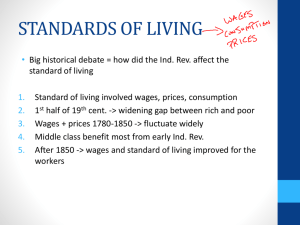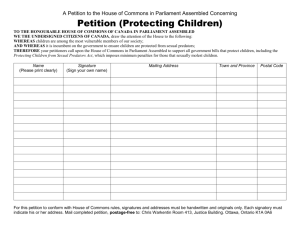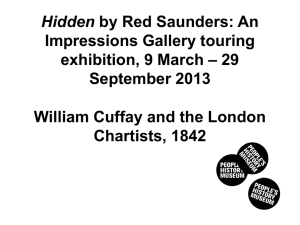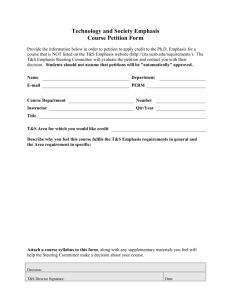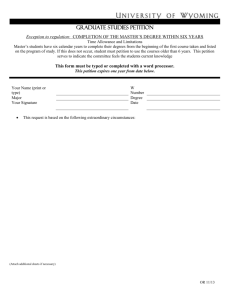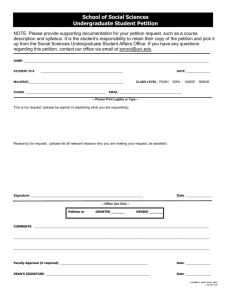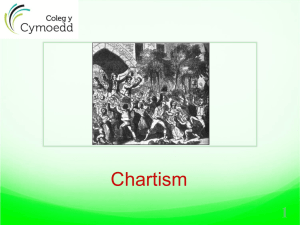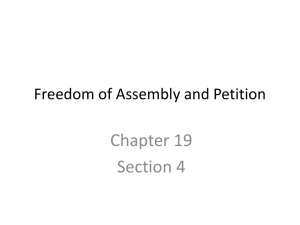The Story of Chartism PPT
advertisement
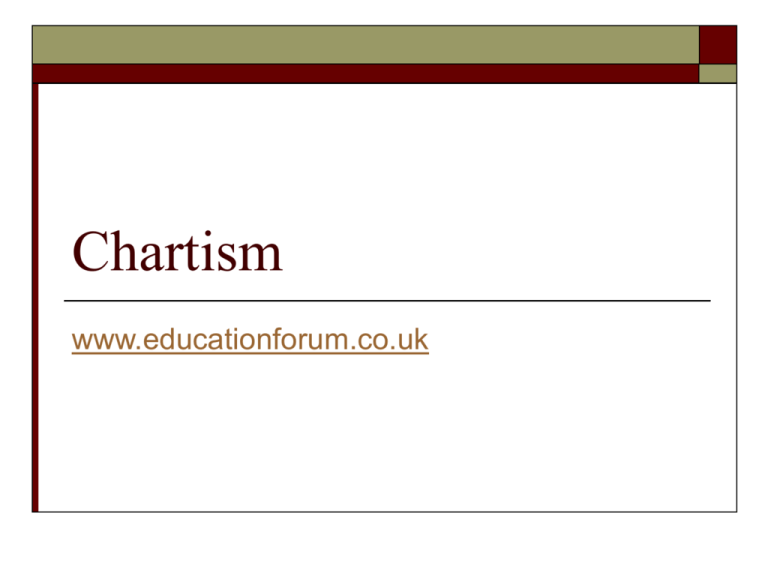
Chartism www.educationforum.co.uk Beginnings Chartism started in 1836 with the formation of the London Working Men’s Association whose Secretary was William Lovett and chief adviser Francis Place. Soon over 150 similar associations were affiliated to the LWMA – the biggest one being it Birmingham led by Thomas Atwood and Feargus O’Connor (owner of the radical newspaper the Northern Star) The Charter Lovett and Place drafted a proposed Reform Bill based on the SIX POINTS of the PEOPLES CHARTER. The plan was to get Parliament to adopt these points in a new Reform Bill A mass petition was organised to be presented to Parliament and if it was rejected a “Sacred Month/National Holiday” or general strike to be called for a month First Petition By 1839 only about ½ million signatures had been collected. Further campaigning made this figure rise to 1.25 million In July 1839 the petition was presented to parliament – Atwood proposed the Bill but it was overwhelmingly voted and laughed out, and the ‘Sacred Month’ duly called. Unfortunately support for the strike was patchy and it was called off almost before it had begun Newport Uprising Already leadership divisions between physical force and moral force Chartists were coming to a head. In November 1839 4,000 men (mostly coalminers) led by John Frost marched on Newport to free the Chartist leader Henry Vincent from jail and takeover the town. The Chartists met stiff resistance from troops who engaged them in musket fire with around 20 Chartists being killed and John Frost arrested. As a result of Newport yet more leaders were arrested by the authorities including Feargus O’Connor himself. The Second Petition In 1842 a second petition was organised and presented to Parliament – this time around 3.4 million signatures, Around 100,000 supporters processed the petition to Parliament who duly rejected it again. The ‘Plug Plot’ Riots followed in the northern industrial areas as protesters removed the plugs from steam engines making factories grind to a halt – widespread looting also occurred The authorities took a firm line – troops were rushed to trouble spots using the new railways and hundreds of strikers arrested with 79 being transported to Australia The Third Petition The last hurray of Chartism occurred during the trade slump of 1847/8 A wave of popular revolutions spread across Europe in France, Italy and Germany A third and final monster petition was collected by the Chartists – with O’Connor (now elected to parliament) even preparing a proposed new constitution for a British republic – revolution was in the air! Kennington Common 1848 A massive demonstration was planned outside Parliament whilst Parliament debated the 3rd petition. Physical Force Chartists proposed that if the 6 points were rejected to storm Parliament and declare a ‘National Assembly’ in its place. The Authorities called on the 80 year old Duke of Wellington to defend the government. Thousands and troops and special constables (150,000) were called up and armed. Queen Victoria was removed to the Isle of Wight for safe keeping. Chartist numbers were disappointing and with the authorities prepared so well, armed, and holding key strategic positions across the capital it was clear that no revolution was going to happen. O’Connor was allowed to travel to parliament alone with the petition (this time with an estimated 6 million signatures), who again rejected it. O’Connor was left will little option than to tell the crowds to disperse. Ridicule On closer examination the monster petition contained less that 2 million signatures – many were forgeries including Queen Victoria, Robert Peel, Mr Punch, with the Duke of Wellington apparently signing it 16 times! O’Connor had been out manoeuvred and he proposed revolution had fizzled out – he lost face and credibility With a recovery in trade and a return to prosperity by 1850 Chartism was dead and by 1852 O’Connor himself had died.
